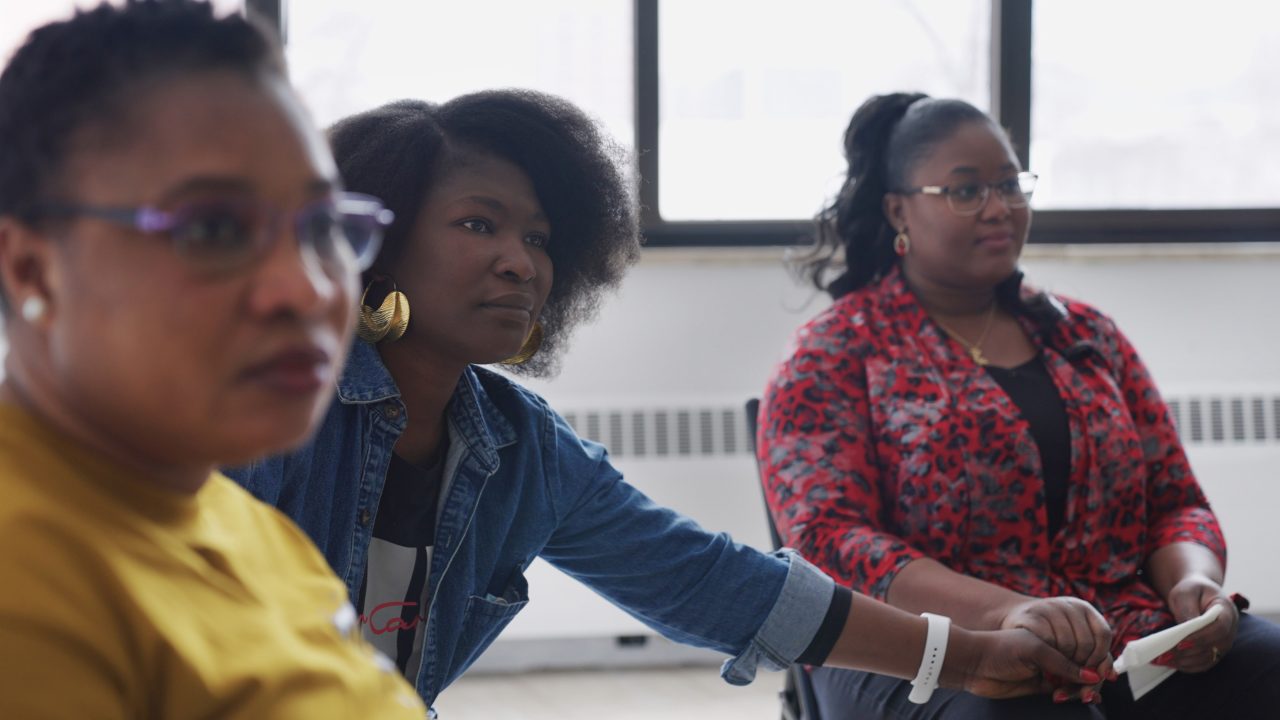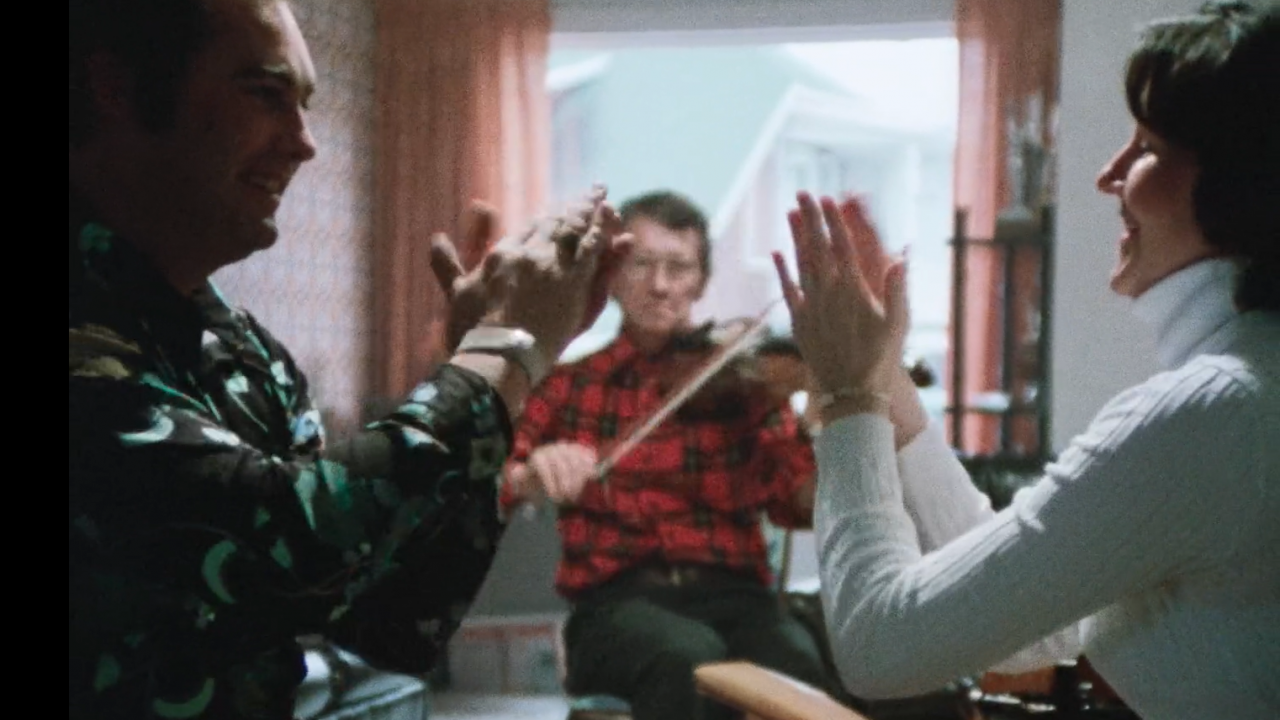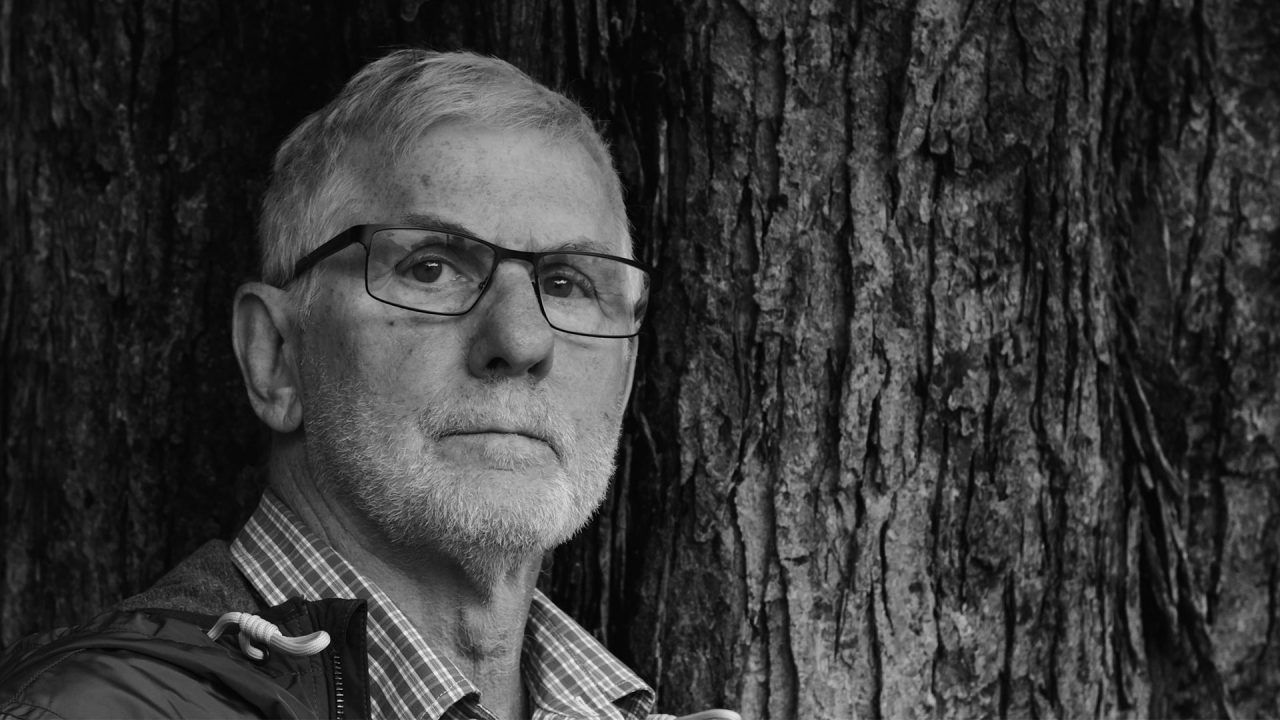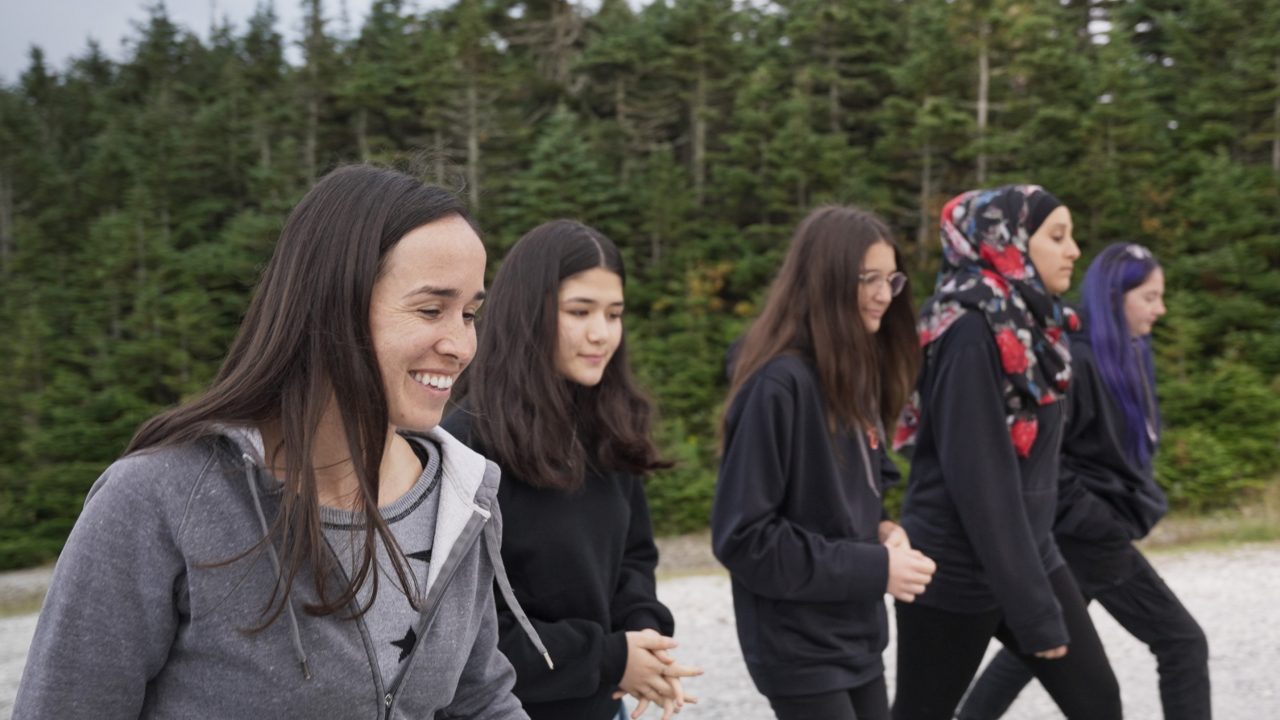
Higher Learning | KOROMOUSSO: Big Sister
Higher Learning | KOROMOUSSO: Big Sister
KOROMOUSSO: Big Sister – Solidarity and courage in post-FGM/C clitoral reconstruction
This film deals with sensitive subject matter. To provide a safe space and protect students’ mental health during and after viewing, please take note of these recommendations.
KOROMOUSSO: Big Sister, Habibata Ouarme & Jim Donovan, provided by the National Film Board of Canada
Keywords : Female agency, reconstructive surgery, effect of immigration on self-esteem, clitoral excision, female identity, female genital mutilation, retaking ownership of one’s body, clitoral reconstruction, physical and psychological health, female sexuality, female solidarity, trauma.
The documentary KOROMOUSSO: Big Sister tells the story of Safieta, who, after being subjected to female genital mutilation/cutting (FGM/C) as a baby in her country of origin, decides she wants to seek reconstructive surgery with the support of her friends. These women speak for themselves—and speak up for themselves. They talk about some of the physical and psychological effects of FGM/C and stress the importance of access to clitoral reconstruction, which allows them to partly reclaim ownership of their bodies and achieve more satisfying sexual health. Through Safieta’s journey, the documentary highlights the solidarity and agency of women and explores the issue of social control that’s associated with the practice of FGM/C, especially among minors. The women’s discussions go beyond the violent nature of the practice, emphasizing the importance of both sexual health and pleasure, a right of all women.
KOROMOUSSO: Big Sister underscores the urgency of providing access to clitoral reconstruction in Canada and, above all, support for women who’ve suffered FGM/C in their country of origin. Such support would offer both physical and psychological healing, in addition to countering stigmatization and social barriers. The documentary addresses issues related to medical and psychological practices for women living with any form of FGM/C, as well as the need to train health and social services professionals in providing suitable care.
The film encourages teaching staff in both the health and social service sectors o gain a better understanding of the issues of prevention, education and raising awareness related to this sensitive women’s health issue.
Female genital mutilation/cutting (FGM/C)
Recognized worldwide as a human rights violation, this practice is rooted in complex sociocultural contexts where gender determinants and relationships involve perceived constraints and benefits. Despite the introduction of legal measures banning the practice of FGM/C, as well as the promotion of awareness raising campaigns, it continues to be practiced in some countries. Moreover, as a result of migration, some people who’ve experienced FGM/C find themselves living in countries that have never been exposed to these practices.
As a professor of nursing working in the field of public health, and as someone who’s concerned with accessibility to healthcare and high-quality services for people with immigrant backgrounds in Canada’s provinces, I recommend that all health and social service professionals and teaching staff watch this documentary to more fully grasp the scope of their responsibility and offering care. This responsibility includes:
- becoming aware of, learning about and educating oneself on issues related to FGM/C, a practice recognized worldwide as a human rights violation and a public health issue. Even though the practice is illegal in Canada, it remains a very sensitive issue here;
- taking a multidisciplinary approach and building cross-sector partnerships to acquire resources and understand the need to provide support and guidance—medical, psychological and social—for women living with FGM/C, and offer them quality care;
- reflecting on one’s own perceptions, attitudes and opinions. The documentary broaches these questions with sensitivity and equity, encouraging self-reflection and pointing out implicit prejudice;
- providing information, care and services that consider the emotions, perceptions and expertise of both sides of the clinical and educational relationships;
- understanding the consequences of FGM/C in order to develop effective public health policies;
- improving the health and well-being of women living with FGM/C in Canada by raising public awareness and fighting against this violation of fundamental human rights.
Thinking about and questioning one’s perceptions and opinions on a troubling subject
Watching a documentary of this nature presents all viewers with the opportunity to examine their own biases, questions and assumptions.
Therefore, after viewing the documentary, encourage those in the audience to take some time to reflect. Then, gradually engage in a conversation, asking them to recall an excerpt of the storyline that especially resonated with them. For example, the part referring to the desired reconstruction of this intimate body part in order to regain a sense of “wholeness” that’s perceived as having been “stolen” or “destroyed.”
In a conversation shown in the film, one woman relates having sensed disapproval in a doctor’s tone, particularly in how she was questioned about this practice; the doctor’s attitude and clinical setting are reported as being potentially stigmatizing and unlikely to inspire trust. One of the consequences of this is to deter women living with FGM/C from seeking healthcare and social services. Another excerpt alludes to the importance of “feeling comfortable with the doctor” and addressing it as soon as one feels uncomfortable.
At another moment in the film, the experience of immigration is compared to a loss, a sort of “death,” that requires finding the courage to live and recreate oneself within a new society. In the context of the film, this means, among other things, adapting to Canada’s immigration laws, learning how the healthcare and social services system works, and living, as a woman who has suffered FGM/C, in a society that knows little about this practice. We recommend discussing the statements made on this topic and pointing out nuances to avoid implicit bias. Arriving in a new society inevitably creates a clash of cultures, values and practices that requires a certain amount of detachment and adaptation. However, it’s also vital that people newly arrived in Canada be supported and informed of their rights, particularly when it comes to access to healthcare and social services.
Depending on her sociocultural identity and on the extent to which this meshes with the values of the host society, a woman living with FGM/C in Canada will develop hybrid norms and values as she integrates. Whether she was previously for or against the perpetuation of the practice of FGM/C, her opinion may or may not change as she develops a sense of belonging to the host society. The documentary highlights the issue of pressures from the country of origin experienced by families living in Canada and the resulting risks for the physical and mental health of young girls, whether they were born in Canada or not.
Medical staff in particular must consider:
- the woman’s personal journey, in order to better assess this type of trauma and how to respond to it, according to the standards of the host society;
- how to start a conversation about this experience while maintaining relational ethics;
- the added value of a multidisciplinary approach and cross-sector partnership revolving around tailored psychological support, pelvic physical therapy and sexual therapy, among other types of treatments;
- the need to put resources in place that mitigate gaps in understanding and interpretation, in particular through the use of interpreters.
The statements made in this documentary are an opportunity to think critically about one’s understanding and perceptions surrounding the practice of FGM/C, which could elicit strong reactions. By recounting parts of people’s lives and presenting personal accounts, the film offers an excellent opportunity for viewers to sharpen their abilities to think critically, be introspective, and act accordingly in emotionally disturbing situations. One lesson the documentary teaches us is the importance, for both parties, of approaching this type of conversation with sensitivity in clinical interactions involving sociocultural issues, and providing timely and committed support in order to offer quality and equitable care.
Taking the time to find information and educate oneself: multidisciplinary and cross-sector partnerships
Learning about the scope of self-help networks and initiatives in Canada aimed at supporting women living with FGM/C will help build a “culture of demystification” and critically examine how these resources can contribute, according to their respective areas of expertise, to enhancing the support for these women in Quebec and Canada.
More specifically, despite the current limitations in healthcare and social services lead to profound and preventable impacts on health and well-being. It is in this context that the documentary clearly demonstrates that the option of clitoral reconstruction should be made available. Though not a simple procedure, it is possible. It requires an entire trajectory of care involving multiple specialists in both the clinical setting (physical and psychological) and in partnership with community organizations, whose specialized support provides added value in the short-, medium- and long-term.
For healthcare and social services staff, it is important to learn about and equip oneself to better understand the issues that women living with FGM/C have experienced—and may continue to experience—in order to provide improved care in clinical and support contexts. At the same time, across Canada, a growing number of resources and awareness-raising, information and training initiatives have been put in place in recent years:
- Studies conducted both among healthcare and social services providers and among women living with FGM/C to generate evidence-based data on the challenges and needs related to both providing and ensuring accessibility to social services and healthcare in Canada;
- Guidelines and resources adapted for Canada in the fields not only of health and social services but also of education and legal services, in particular regarding child and youth protection related to the practice of FGM/C;
- Physical and psychological health services;
- Support services offered by community organizations for women living with FGM/C and their families;
- Public awareness activities;
- Declarations by the federal government and certain provinces on the practice of FGM/C;
- Positions taken by women’s groups, with a feminist and cross-sectional stance, aimed at preventing and eliminating the practice of FGM/C worldwide.
Recommended Resources
Clinics in Canada
- Fondation Sensolia (Montreal, Quebec)
- Women’s Health In Women’s Hands (Toronto, Ontario)
- Halifax Refugee Clinic (Halifax, Nova Scotia)
- MOSAIC Vancouver (Vancouver, British Columbia)
Continued Learning
- The Belgian anti-FGM organization GAMS Belgique
- (Groupe pour l’abolition des mutilations sexuelles) has a video about defibulation produced in partnership with the RHCforFGC Gender-Net Plus Europe-Canada project. The video is offered in nine languages (Afar, Amharic, Arabic, Dutch, English, French, Fula, Somali and Tigrinya)
- GAMS Belgique YouTube channel
- Supplementary Video Ressources (French only)
- End FGM Canada Network
- Flourish at Women’s Health in Women’s Hands
- Clitoral reconstruction: challenges and new directions
- Female genital cutting (FGC) and the ethics of care: community engagement and cultural sensitivity at the interface of migration experiences
Bilkis Vissandjée is a full professor at Université de Montréal’s Faculty of Nursing and a researcher at the CReSP public health research institute of Université de Montréal and at the SHERPA research centre of the CIUSSS du Centre-Ouest-de-l’Île-de-Montréal. The key focus of her research and intervention is the challenge of providing quality care with a multifaceted perspective that considers gender-based social relationships, ethnicity and language, as well as health literacy, immigrant experiences, and equity.
Pour lire cet article en français, cliquez ici.
Discover more Educational blog posts | Watch educational films on NFB Education | Watch educational playlists on NFB Education | Follow NFB Education on Facebook | Follow NFB Education on Pinterest | Subscribe to the NFB Education Newsletter



